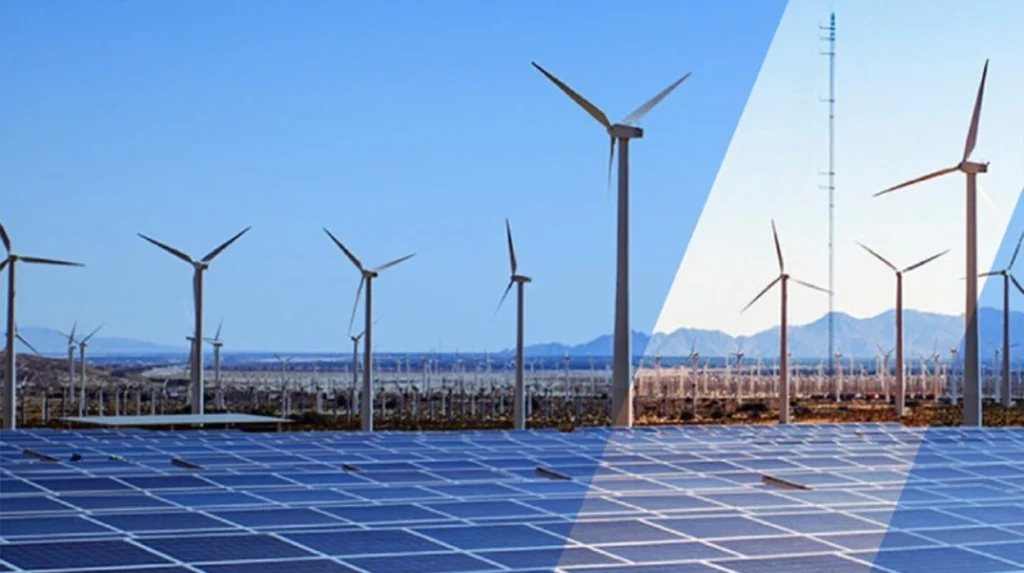The British renewable energy company Xlinks is behind one of the world’s most ambitious green energy projects — a 2,500-mile subsea power cable connecting Morocco to the United Kingdom. Designed to tap into Morocco’s abundant solar and wind resources, the project aims to deliver enough electricity to power 7 million UK homes, covering around 8% of the country’s current electricity needs. Valued at approximately £24 billion ($29.9 billion), with roughly £5 billion earmarked for UK infrastructure, this project represents a significant opportunity for clean energy investment.
Xlinks’ project envisions establishing 11.5 gigawatts of solar and wind capacity in Morocco’s Guelmim Oued Noun region, complemented by a large-scale battery storage system of 22.5 GWh/5GW. The electricity generated would be transmitted through a 4,000-kilometer subsea cable running along the continental shelf via Portugal, Spain, and France, before connecting into the British power grid in Devon, southwest England.
This groundbreaking initiative promises to bring down wholesale energy prices, help the UK meet clean energy targets, and answer the “Dunkelflaute” challenge – periods of low wind and solar generation. Dave Lewis, Xlinks’ chairman and former CEO of Tesco Plc, articulates the project’s potential, stating, “It offers enough stable, reliable and dedicated supply to power 7 million homes, or 8% of current electricity needs. It brings billions in inward investment. It helps reduce wholesale energy prices while cutting emissions. It also answers the Dunkelflaute challenge. All without the need for government investment.”
UK’s Regulatory Roadblocks and Project Suspension
Despite its strong technical and economic merits, Xlinks has faced significant hurdles with the UK government, primarily over the financial and regulatory mechanisms needed to underpin the project. Central to this bottleneck is the Contract for Difference (CfD) — a key pricing guarantee that ensures electricity suppliers a fixed resale price for renewable power over a fixed term, which is crucial for securing investment.
In early June 2025, Xlinks announced the temporary suspension of administrative procedures related to the project in the UK, citing the absence of a contractual agreement on tariff guarantees. The company had proposed a CfD tariff between £77 and £87 per megawatt-hour, a price bracket above current UK offshore wind deals but below that of nuclear projects such as Hinkley Point C secured back in 2016. Without this, investors are unwilling to commit the estimated £8 billion required for the UK segment.
Dave Lewis underscored the urgency and frustration, declaring, “International investors will not wait indefinitely.” He reiterated that while funding commitments remain available, they are contingent on “obtaining clear political guarantees” from UK authorities.
Xlinks also made it clear that despite speculation, it has never entertained redirecting the project to other countries, reaffirming its commitment to the original Morocco-UK plan, pending UK regulatory clarity.
UK Government’s Response and Evaluation
The UK government has engaged with Xlinks extensively through its Department for Energy Security and Net Zero. Officials have been evaluating the project’s feasibility, benefits, and alignment with government objectives, including the milestone of making Britain a clean energy superpower by 2030.
A government official stated that the project is under close review, with consideration of risks and strategic fit. The government has acknowledged Xlinks’ request for a bilaterally negotiated 25-year CfD contract under the Energy Act 2013 to secure a stable price per MWh for the electricity supplied. However, the final decision remains pending amid shifting ministerial priorities and political uncertainties.
This cautious approach reflects the UK’s broader energy policy considerations as it aims to balance ambitious renewable targets against fiscal prudence and energy market stability.
Xlinks Turns to the European Union for Support
Facing prolonged delays and a lack of firm commitment from London, Xlinks has pivoted its lobbying efforts towards the European Union. According to recent reports from August 2025, the company has intensified its campaign to secure political backing, regulatory facilitation, and financial support from EU institutions and member states.
The EU represents a potentially more favorable political environment for the project’s continuation, particularly as it aligns with the bloc’s own green energy and cross-border electricity interconnection goals. By engaging with Brussels and partners in Portugal, Spain, and France—through whose waters the subsea cable runs—Xlinks hopes to build a multilateral coalition to pressure the UK or explore alternative pathways for the project.
An EU source familiar with the discussions commented that Xlinks is “leveraging the EU’s drive for energy transition and interconnectivity”, aiming to keep the project viable despite setbacks from the UK government.
Strategic Importance and Wider Implications
The Xlinks Morocco-UK power link is not merely a commercial venture but a strategically significant project in the context of Europe’s and the UK’s transition to net-zero emissions. It promises a reliable, low-carbon source of electricity complementing domestic wind and solar installations, which can experience intermittent generation.
Given the UK’s target to achieve a clean power grid by 2030, the project’s timeline—scheduled to come online in 2031—presents some misalignment. Still, its scale and longevity underscore a critical component of long-term energy security, investment, and decarbonization strategy.
Should the project ultimately fail to secure UK backing, it raises questions about the UK’s ability to meet its renewable energy ambitions and could push the company to seek partnerships or market opportunities elsewhere in Europe.
Investor Backing and Technical Leadership
Xlinks has attracted significant investment from major energy corporations, including GE Vernova Inc., which invested $10.2 million in 2024, TotalEnergies, Abu Dhabi National Energy Co., and the UK’s largest retail energy supplier, Octopus Energy. These endorsements highlight the technical feasibility and economic promise of this massive renewable energy infrastructure pioneer project.
The subsea cable will employ the latest high-voltage direct current (HVDC) technology to minimize transmission losses over the long distance, providing stable and efficient power delivery across continents.
Xlinks’ journey illustrates the growing pains of pioneering renewable mega-projects that converge ambitious climate goals, complex multinational coordination, and intricate regulatory frameworks. The company’s relentless efforts to secure political and financial backing amid the UK’s hesitation reflect the broader challenges facing clean energy infrastructure development in a geopolitically divided Europe.
As the lobbying stage shifts from London to Brussels, the outcome of Xlinks’ Morocco-UK power link will serve as a bellwether for future transnational renewable energy collaborations aiming to harness the full potential of the continent’s and neighboring regions’ renewable resources.







